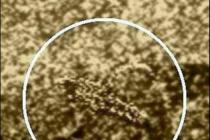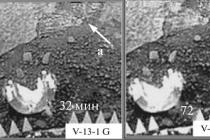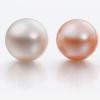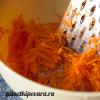Not every even experienced housewife can say with confidence that she knows how to peel celery correctly and whether it needs to be done at all. Let's try to figure out this seemingly simple question.
Celery is used in cooking as a seasoning: its roots and petioles, which have a spicy taste and tart smell, are eaten. To enhance the aroma, it is added to first courses; when fresh, it is chopped for salads, and the petioles go well with both seafood and vegetables. Celery juice is often used in folk medicine.
Greenery
The leaves of this plant are not eaten as often as the roots: they do not need to be cleaned, just rinse thoroughly in running water. The greens can be chopped or left as whole leaves, depending on how you plan to use them (decorate a salad or chop for soup).
Roots
The question of whether celery needs to be peeled concerns mainly root vegetables. It is quite large and knotty in celery. If you have never chosen a product in a store before, then stop at the smoothest and hardest specimens with small green leaves at the top. Only well-washed and peeled roots are eaten.
After washing, cut off the top and tail of the root (as when cooking beets). If the root vegetable is large, cut off the amount of celery required for preparing the dish, and put the rest in the refrigerator. Remove the skin of the root vegetable with a sharp knife or vegetable peeler. After peeling, white pulp should remain, so those places that the vegetable peeler did not capture should be cut out with the tip of a knife. After rinsing the root vegetable, you can chop it using a grater or knife (depending on the type of dish for which the plant is intended). Celery is cut in different ways (cubes, slices, strips, etc.) - the main thing is not to forget to fill it with cold water, especially if it will be left in the open air before use (celery will quickly darken without water).
Petioles
Peeling stalk celery is not always necessary. Petioles, i.e. shoots of the stem can simply be washed with water if they do not look too dirty or old: such specimens should have straight stems and bright green leaves. By the way, celery will taste more pleasant if it has not been washed before sale. At home, you simply rinse the stems with warm running water. If the purchased celery is still a little old, then you can peel the celery stalks from the outside: carefully remove the hard veins and fibers with a sharp knife or vegetable peeler - this will make it more suitable for consumption.
Bon appetit and successful culinary experiments!
For cooking, you can use both the rhizome and stalks of celery. It can be added to salads, sauces, soups. Thanks to its fresh taste and high amount of fiber, this type of green is very beneficial for the body. If you've never used it in cooking before, check out our tips for preparing it properly.
Despite this, this plant is not very popular in our country, more and more people are including it in their diet. It can be used raw or processed, and is included in many recipes. If desired, you can freeze it in the freezer.
Celery rhizome is used as a natural spice because it has a tart taste. As for the stems (they are also called petioles), they are added to salads, stews, and used to make snacks. You can also make a delicious juice or smoothie from the stems.
How to peel celery correctly? Before you eat it, you must prepare the root vegetable. First, rinse it and remove all dirt. Separate each stem and rinse it individually, place it on paper napkins or towels to absorb the water.
As for the greens, which are located on the top of the stems, they are used very rarely. Simply rinse them and chop them or add them whole to your dish if desired. You can add the leaves to salads and use them for decoration.
Check out our recipe for Creamy Potato and Celery Soup
 How to peel celery root?
How to peel celery root?
You will notice dirt and unevenness on the surface of the rhizome, so any housewife will have a completely logical question - is it necessary to remove the peel? When choosing a product, try to choose a root that has a smooth surface, without a lot of knots and irregularities, it will be much easier to clean.
Rinse the root under water several times to remove dirt. Then, using a knife, remove the top and the part where the tail is located. If you need to use part of the root rather than the whole root, cut off the required amount and store the rest in the refrigerator.
All that remains is to clean it with a knife; you can also use a special tool - a vegetable peeler. If there are dark inclusions on the surface, remove them with a knife (like in potatoes). Rinse the root again in water and chop (or grate) it.
Since peeled celery root begins to darken when exposed to oxygen, brush it with lemon juice or immerse it in water before using, then drain it before adding the vegetable to the dish.
Do I need to peel celery stalks, and how do I do it?

If everything is clear with the rhizome, what to do with the stems? Since they have thin and delicate skin, there is no need to peel them, just rinse them thoroughly with water. If the bottom of the stems is darkened, doesn't look very fresh, or is stained, simply cut it off with a knife and discard. If the celery is overripe and the stems have rough skin, carefully cut it off with a vegetable peeler or knife. But we still recommend buying fresh and not overripe celery; it has a more pleasant and delicate taste.
With proper use of celery stalks and roots, this product will become your assistant in the kitchen. In Mediterranean cuisine it is added to many dishes. In addition, this plant heals the body, improves digestion, and eliminates toxins. Add the root or stems to a salad, soup, or vegetable stew. You can also add celery stalks to fruit or vegetable smoothies.
Unfortunately, healthy and flavorful celery is not used as often in cooking as other vegetables. For this reason, housewives who still decide to introduce it into their diet have no idea how to peel celery. The approach taken depends on the type of product used and the condition it was in at the time of purchase. The quality of processing affects the final taste and aroma of the product, so you need to pay special attention to the cleaning procedure.
Types of celery and rules for choosing it
Many people mistakenly believe that only one type of celery is sold in stores, it is simply divided into several parts. In fact, you need to understand that there is not one type of celery, but three. And when choosing each of them, you should pay attention to specific points:
- Sheet. Green leaves of this type are saturated with essential oils, which are very beneficial for the body. A product with an undeveloped root is usually used in salads and soups. When choosing a product, you need to pay attention to the brightness and richness of the color of the leaves, their freshness and elasticity. They should exude a persistent, pleasant aroma.
Advice: You should not buy pre-peeled or even washed celery, regardless of its type. The processed component deteriorates faster and loses its pronounced aroma in just a few hours.

- Stem (petiole). In this type of vegetable, the root crop is also poorly developed, but the plant has powerful fleshy stems, the diameter of which can reach 4 cm in diameter. Stews and salads are prepared from them, and fresh juice is extracted. High-quality fresh stems should be literally soaked in juice. When they break, a crunching sound will be heard. It is better not to purchase components covered with scratches, cracks and brown stains.

- Root. This type of celery is represented by a massive root crop, which can reach 20 cm in diameter. The pulp has a bitter-sweet taste. It is usually dried and added to soups or salads. Eating celery will be firm, with no indentations on the surface when pressed. You should not take a root vegetable covered with knots. The fresh product is smooth, with small green leaves on the top.

In all of the above cases, you need to make sure that the vegetable has not sprouted. The presence of an “umbrella” with seeds indicates that there is a risk of acquiring a very bitter and practically inedible product.
How to properly peel leaf and stem celery?
The leafy type of vegetable does not require pre-cleaning at all. You just need to remove it from the stem, rinse it under running water, shake off excess moisture and dry it a little on a towel or board. After this, the products can be crushed or used as a whole. They are added to first courses, salads, and dried for further use.

Celery stalks are subject to more careful processing. Be sure to cut off at least 3 cm of the bottom of the product and remove the top shoots. Next we proceed depending on the age of the celery. If it is very young and covered with the thinnest skin without signs of wrinkling or brown streaks, there is no need to remove it. It is enough to rinse the product under hot running water, dry it and can be used for its intended purpose. If the product is already slightly aged and covered with a thick film, it should be removed. You can use a knife for this, but it is much more convenient to use a vegetable peeler.
Peculiarities of processing celery root
Housewives most often have problems with this plant. Given the fact that it grows in the ground, you first need to get rid of traces of soil on the surface of the formation. This is one reason why it is better to purchase a smooth root rather than a knotty one. It is much easier to clean, and it is easier to cut off the skin.

The cleaning process for the product is as follows:
- We take a large knife and use it to cut off the skin from the upper and lower parts of the fruit.
- We cut off as much root as is needed to prepare the planned dish. We put the rest in the refrigerator. You don't have to use bags or cling film. They will not increase the shelf life.
- Using a knife or vegetable peeler, cut off the skin and spoiled areas from the prepared piece. There should not even be spots left on the pulp; we ensure its purity and uniformity.
- Particular attention should be paid to the structure of the root crop. It can be divided into spongy and main parts. The first consists of fibers that help cleanse the body, but it is absolutely tasteless. It is used to prepare soups and infusions during the detoxification period. The second one saturates dishes with vitamins and aroma, which is why it is most often used in cooking.
- Now we rinse the pulp again under cool water, cut it as needed according to the recipe. In general, the smaller the pieces, the more nutrients will get into the finished dish.
- If the workpiece will not be used immediately, it must be filled with cold water. Otherwise, within a few minutes it will begin to darken like potatoes.
Many people know how useful celery is and how its introduction into the diet will affect the condition of the body. Unfortunately, this knowledge very rarely encourages the use of the component in the process of preparing familiar dishes. This is usually due to the lack of skills in the field of pre-processing of the product. Violation of the rules for choosing and cleaning techniques for celery leads to the fact that it imparts an unpleasant bitterness or too strong aroma to the finished compositions.
Unfortunately, healthy and flavorful celery is not used as often in cooking as other vegetables. For this reason, housewives who still decide to introduce it into their diet have no idea how to peel celery. The approach taken depends on the type of product used and the condition it was in at the time of purchase. The quality of processing affects the final taste and aroma of the product, so you need to pay special attention to the cleaning procedure.

Types of celery and rules for choosing it
Many people mistakenly believe that only one type of celery is sold in stores, it is simply divided into several parts. In fact, you need to understand that there is not one type of celery, but three. And when choosing each of them, you should pay attention to specific points:
- Sheet. Green leaves of this type are saturated with essential oils, which are very beneficial for the body. A product with an undeveloped root is usually used in salads and soups. When choosing a product, you need to pay attention to the brightness and richness of the color of the leaves, their freshness and elasticity. They should exude a persistent, pleasant aroma.
Advice: You should not buy pre-peeled or even washed celery, regardless of its type. The processed component deteriorates faster and loses its pronounced aroma in just a few hours.

- Stem (petiole). In this type of vegetable, the root crop is also poorly developed, but the plant has powerful fleshy stems, the diameter of which can reach 4 cm in diameter. Stews and salads are prepared from them, and fresh juice is extracted. High-quality fresh stems should be literally soaked in juice. When they break, a crunching sound will be heard. It is better not to purchase components covered with scratches, cracks and brown stains.

- Root. This type of celery is represented by a massive root crop, which can reach 20 cm in diameter. The pulp has a bitter-sweet taste. It is usually dried and added to soups or salads. Eating celery will be firm, with no indentations on the surface when pressed. You should not take a root vegetable covered with knots. The fresh product is smooth, with small green leaves on the top.

In all of the above cases, you need to make sure that the vegetable has not sprouted. The presence of an “umbrella” with seeds indicates that there is a risk of acquiring a very bitter and practically inedible product.
How to properly peel leaf and stem celery?
The leafy type of vegetable does not require pre-cleaning at all. You just need to remove it from the stem, rinse it under running water, shake off excess moisture and dry it a little on a towel or board. After this, the products can be crushed or used as a whole. They are added to first courses, salads, and dried for further use.

Celery stalks are subject to more careful processing. Be sure to cut off at least 3 cm of the bottom of the product and remove the top shoots. Next we proceed depending on the age of the celery. If it is very young and covered with the thinnest skin without signs of wrinkling or brown streaks, there is no need to remove it. It is enough to rinse the product under hot running water, dry it and can be used for its intended purpose. If the product is already slightly aged and covered with a thick film, it should be removed. You can use a knife for this, but it is much more convenient to use a vegetable peeler.
Peculiarities of processing celery root
Housewives most often have problems with this plant. Given the fact that it grows in the ground, you first need to get rid of traces of soil on the surface of the formation. This is one reason why it is better to purchase a smooth root rather than a knotty one. It is much easier to clean, and it is easier to cut off the skin.

The cleaning process for the product is as follows:
- We take a large knife and use it to cut off the skin from the upper and lower parts of the fruit.
- We cut off as much root as is needed to prepare the planned dish. We put the rest in the refrigerator. You don't have to use bags or cling film. They will not increase the shelf life.
- Using a knife or vegetable peeler, cut off the skin and spoiled areas from the prepared piece. There should not even be spots left on the pulp; we ensure its purity and uniformity.
- Particular attention should be paid to the structure of the root crop. It can be divided into spongy and main parts. The first consists of fibers that help cleanse the body, but it is absolutely tasteless. It is used to prepare soups and infusions during the detoxification period. The second one saturates dishes with vitamins and aroma, which is why it is most often used in cooking.
- Now we rinse the pulp again under cool water, cut it as needed according to the recipe. In general, the smaller the pieces, the more nutrients will get into the finished dish.
- If the workpiece will not be used immediately, it must be filled with cold water. Otherwise, within a few minutes it will begin to darken like potatoes.
Many people know how useful celery is and how its introduction into the diet will affect the condition of the body. Unfortunately, this knowledge very rarely encourages the use of the component in the process of preparing familiar dishes. This is usually due to the lack of skills in the field of pre-processing of the product. Violation of the rules for choosing and cleaning techniques for celery leads to the fact that it imparts an unpleasant bitterness or too strong aroma to the finished compositions.
Tell us how to peel celery and is it necessary to do it at all? I really like adding grated root to vegetable salads. The other day a neighbor came to visit, I was just preparing a salad. So she says that the skin does not need to be trimmed, it contains “the most vitamins.” Wash well enough. Is it true?
Not everyone likes the specific smell of celery, but you shouldn’t exclude it from your diet. This root vegetable is a real storehouse of vitamins, and nutritionists consider its juice especially useful. However, other parts of the plant are useful in the kitchen. The leaves can be used for preservation or in salads. And the fragrant rounded root vegetables will add piquant tartness to salads and richness to the broth. If you decide to try this vegetable, it doesn’t hurt to know some of the nuances of how to peel celery, because it comes in different types. Depending on this, the preparation of the vegetable for consumption differs.
So, according to which part of the plant is intended for use as food, three varieties of celery are distinguished:
- sheet;
- petiolate;
- root.
Now let's look at the features of cleaning each type.
Picked, washed, eaten - minimal preparation of leaf celery
 The easiest and fastest to clean are leafy varieties. Here it is enough just to rinse the foliage well and let it dry. The only thing you may need is to select yellowed and limp leaves, if any. However, when buying freshly cut celery there will be no such problems.
The easiest and fastest to clean are leafy varieties. Here it is enough just to rinse the foliage well and let it dry. The only thing you may need is to select yellowed and limp leaves, if any. However, when buying freshly cut celery there will be no such problems.
Do I need to peel stalked celery?
 Some housewives, having tried juicy thick petioles for the first time, refuse them. The reason for this is the excessive fibrousness and rigidity of the stems. In fact, this is indeed possible, but for a completely different reason - if old petioles are caught. It is they that are covered with coarsened fibers on top, which must be cut off with a knife. But the internal fibers remain moderately rigid and are almost not felt, while maintaining the characteristic structure of celery.
Some housewives, having tried juicy thick petioles for the first time, refuse them. The reason for this is the excessive fibrousness and rigidity of the stems. In fact, this is indeed possible, but for a completely different reason - if old petioles are caught. It is they that are covered with coarsened fibers on top, which must be cut off with a knife. But the internal fibers remain moderately rigid and are almost not felt, while maintaining the characteristic structure of celery.
But young petioles can be consumed without additional cleaning, simply by washing them.
How to clean celery root?
 The roots of this celery are somewhat reminiscent of beets, only whitish in color and with an uneven surface covered with tubercles. They can be impressive in size. When purchasing, it is better to choose those fruits that have a smoother skin - they will be easier to peel, and there will be less waste of valuable aromatic pulp.
The roots of this celery are somewhat reminiscent of beets, only whitish in color and with an uneven surface covered with tubercles. They can be impressive in size. When purchasing, it is better to choose those fruits that have a smoother skin - they will be easier to peel, and there will be less waste of valuable aromatic pulp.
You need to clean it in any case, young or old, small or large. Firstly, it is the peel that absorbs nitrates, and secondly, the spongy top of the fruit has no taste and needs to be cut off and thrown away.
Before cleaning, root vegetables should be washed, then cut off the lower and upper parts. All growths and depressions are also cut out, and the fruit itself is peeled like a potato. If it is too large and will not be used completely right away, you can cut off and clean half. The second part of the celery is placed in a bag and stored in the refrigerator. By the way, celery can lie there for a very long time - it practically does not spoil and remains hard. The only thing is that the cut area darkens, and in the future it will need to be trimmed thinly.
Video on how to quickly peel celery root














